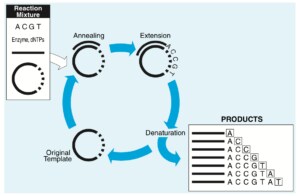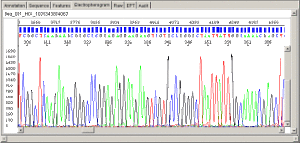Even today, Sanger Sequencing is considered the gold-standard in DNA sequencing. Whether you are new to Sanger sequencing by Capillary Electrophoresis and want to learn about the technology and how you can benefit from it or if you are an expert and want to finesse your skills, we hope that our educational blog series will certainly help you achieve that and more. Our 6 blogs below are dedicated to helping you achieve your goals. So let’s get started…
Sanger Sequencing by CE 1: Foundations
Part one of our six-part series on Sanger sequencing and Capillary Electrophoresis, starts with the history and significance of the accepted gold standard in DNA sequencing. Here, we take a look at using Sanger dideoxy chemistry to terminate elongating DNA strands, which are then separated via capillary electrophoresis (CE) in order to obtain single-base resolution and discrimination between single-base changes in DNA length.
Sanger Sequencing using CE 2: Fragment Analysis
Part two examines another kind of DNA analysis using capillary electrophoresis (CE), to measure DNA fragments of varying size as the final determination, in contrast to using the fragment-size differences to elucidate sequence information.
Fragment Analysis using CE 3: Designing a 27-plex PCR
Part three of our series on Sanger Sequencing by Capillary Electrophoresis is about primer design. Primer design for Sanger sequencing is a very straightforward process with online tools such as the Primer Designer™ Tool which offers >300,000 primer pairs targeting the human Exome as well as the OligoPerfect™ Designer. But we dive deeper into primer design for more specialized Sanger CE applications, such as for human identification.
Sanger Sequencing by CE 4: Bioinformatics
In part four of our six-part series gives an overview of how data is converted by a capillary sequencing instrument from an analog signal to a digital one, assigned a base call (or fragment length) with a quality metric, and lastly variant reporting.
Sanger Sequencing by CE 5: Sanger Sequencing Applications
Part five is dedicated to applications of Sanger sequencing where we explore and highlight applications such as de novo sequencing, re-sequencing, microbial, methylation, and more.
Sanger Sequencing by CE 6: Resources
Our last part concludes with this final post to point out different online resources made available to you. From guides you can download, to important links and resources that you can use to help you answer questions you may have.
For more information or to download our Sanger Sequencing Handbook visit us here
We hope you’ve enjoyed our educational series on Sanger sequencing by Capillary Electrophoresis. If you have any questions or would like to learn more about a specific topic, please be sure to let us know in the comments section below.
Leave a Reply